Media Transfer Lab at VSW
The Media Transfer Lab serves artists, non-profit organizations, families with home movies, archives, amateurs, and filmmakers from around the world.
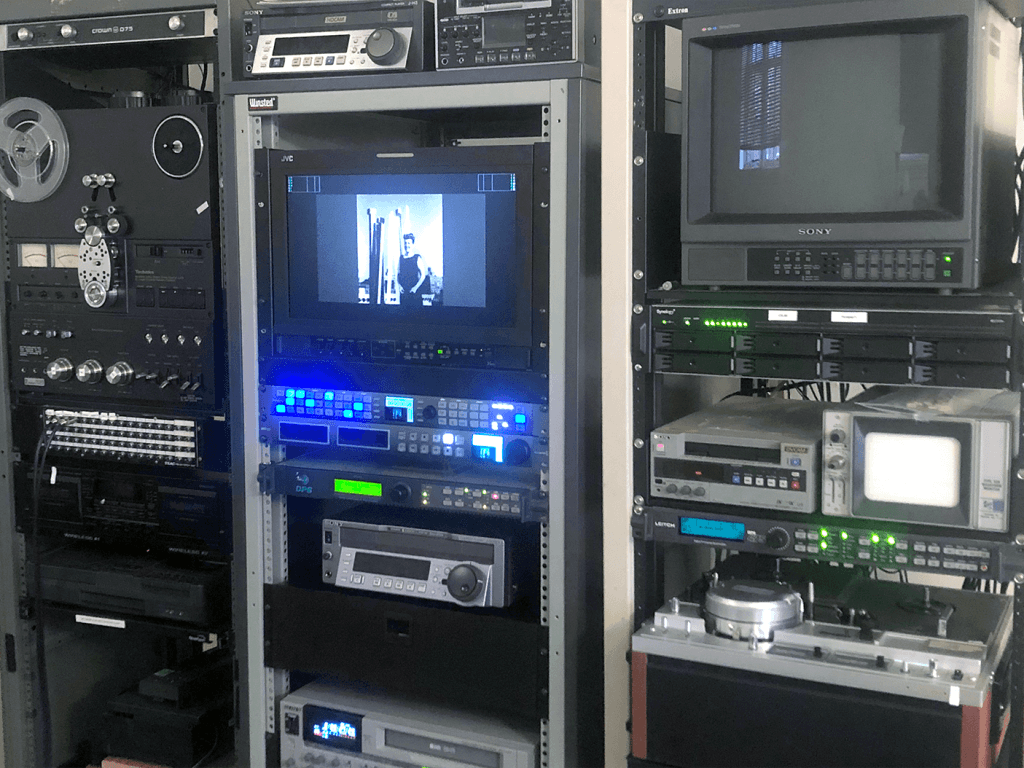 Media Transfer Lab at VSW
Media Transfer Lab at VSWThe Media Transfer Lab is VSW’s on-site digitization lab for converting magnetic tapes and film media for access and preservation.
The Media Transfer Lab is currently able to transfer:
• EIAJ 1/2″ open reel tape
• 3/4″ U-matic, U-maticSP
• VHS, VHS-C, Betamax
• 8mm, Hi8, miniDV
• Betacam/SP, Digital Beta, HDCAM
• 1/4″ Reel to Reel Audio, Audio cassette
• 16mm film (currently SD only)
Many of these tape formats, including 1/2″ and U-matic, are at high risk due to their age and the need to digitize them is urgent. Working playback devices and parts are increasingly rare.
Contact Nilson Carroll at nilsoncarroll@vsw.org or (585) 204-0660 with any questions or for a transfer estimate. Consultation is also available for archival or home collections.
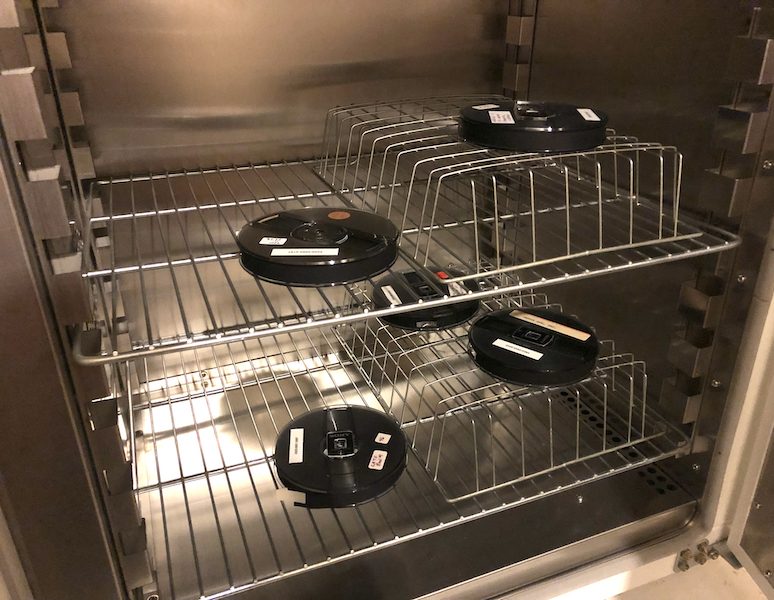 Medical-grade media oven
Medical-grade media ovenPreservation
Tapes are inspected and cleaned before transfer, and treated for Sticky Shed Syndrome and Binder Hydrolysis in our on-site media oven if necessary. Certain tape stocks are more likely to develop binder degradation than others. Depending on how a tape has been stored, it may have developed mold (often appearing as a white deposit on the surface of the tape), which can be a significant health risk. Tapes that have developed mold should be handled with care while masked, and should not be played. Tapes should be stored in a cool, dry location to minimize irreversible damage.
Transfers are completely supervised by a lab technician, who produces a transfer log and MD5 checksum upon completion. Vrecord, software based on AMIA Open Source’s ffmpegdecklink, is used to capture the video signal and allows the technician to monitor luminance and chrominance values. Playback devices are cleaned after each tape.
The Media Transfer Lab produces archival quality, 10-bit uncompressed FFV1 digital video files, and can create compressed access and mezzanine files upon request. Digital files can be stored on external hard drives for transfer to client.
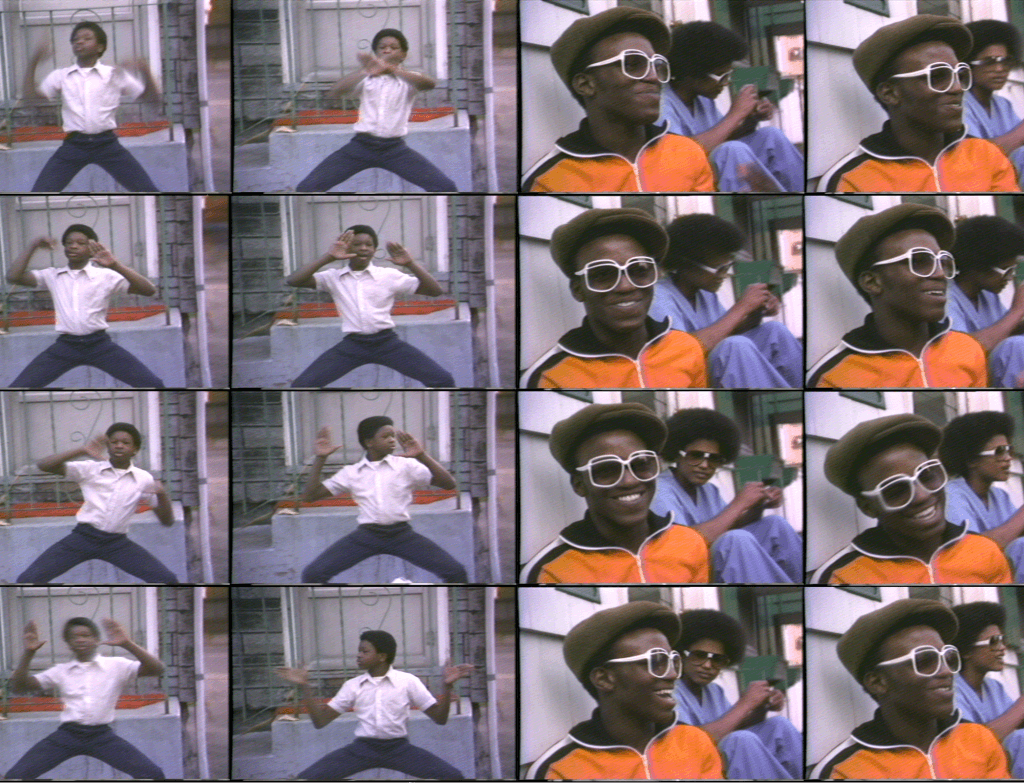 Stills from "Quaker Locks," a Portable Channel video featuring interviews with a Rochester-based dance group. Original format: 3/4" U-matic
Stills from "Quaker Locks," a Portable Channel video featuring interviews with a Rochester-based dance group. Original format: 3/4" U-maticThe Media Transfer Lab has been working to digitize and make accessible the VSW Film and Video Collection, including tapes from the Portable Channel Collection and the TV Dinner Collection, which document decades of activism in Rochester, New York.
“I am most grateful to Nilson Carroll and Visual Studies Workshop in Rochester, New York for their professional and creative work digitizing my early 1/2″ reel to reel video tapes. Magnetic video tapes as early as 1974 have transferred to digital files beautifully. Even better than I remembered, Nilson, the fine craftsman and media artist that he is, has made my long-standing past video dreams and memories come back to life.”
– Peer Bode, video artist
Learn more about magnetic preservation and the archives at VSW in this recent article from CITY.
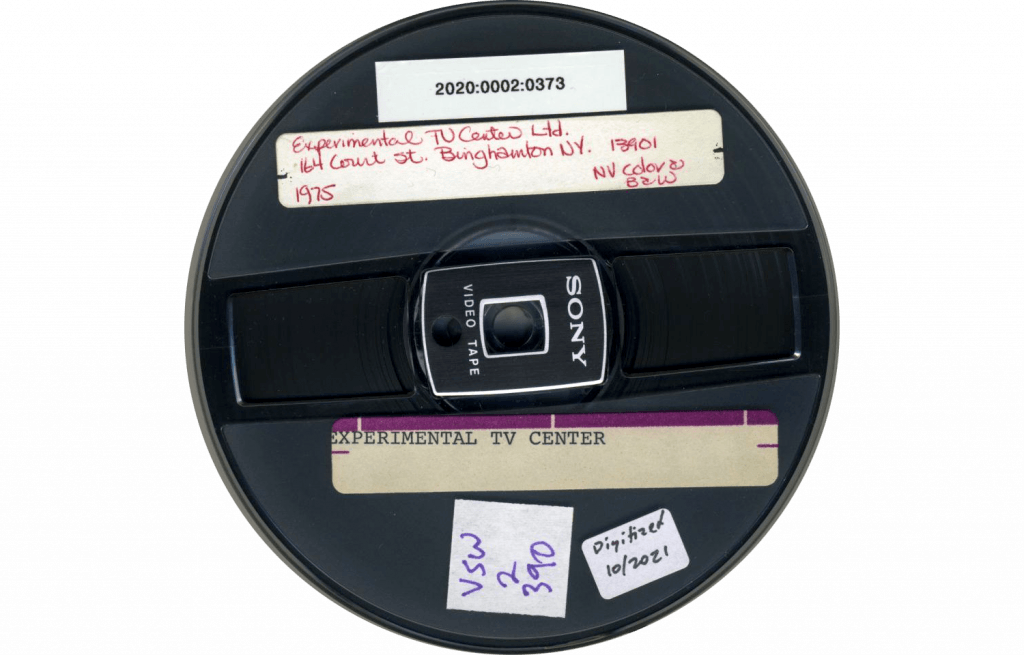 1/2" open reel, EIAJ-1, one of the most common tape formats in the VSW Collection. Introduced in 1969, this format revolutionized studio and field recording, and was used into the 1980s.
1/2" open reel, EIAJ-1, one of the most common tape formats in the VSW Collection. Introduced in 1969, this format revolutionized studio and field recording, and was used into the 1980s.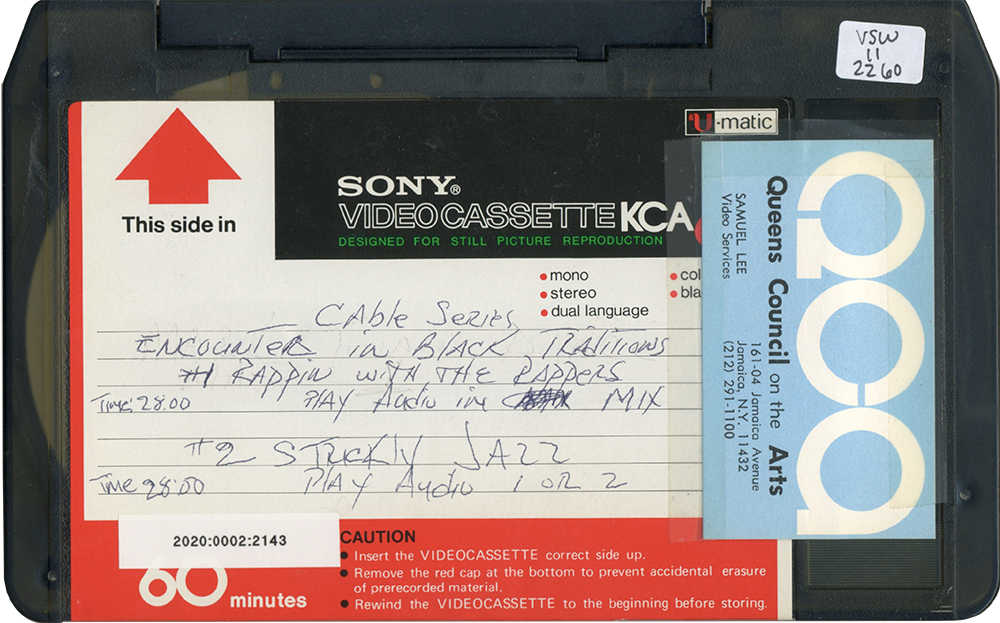 3/4" U-matic, one of the other most common formats in the VSW Collection. Introduced in 1971, this format was initially developed for industrial and education uses, U-matic was widely used by artists and community organizations in the 1980s and 1990s.
3/4" U-matic, one of the other most common formats in the VSW Collection. Introduced in 1971, this format was initially developed for industrial and education uses, U-matic was widely used by artists and community organizations in the 1980s and 1990s.
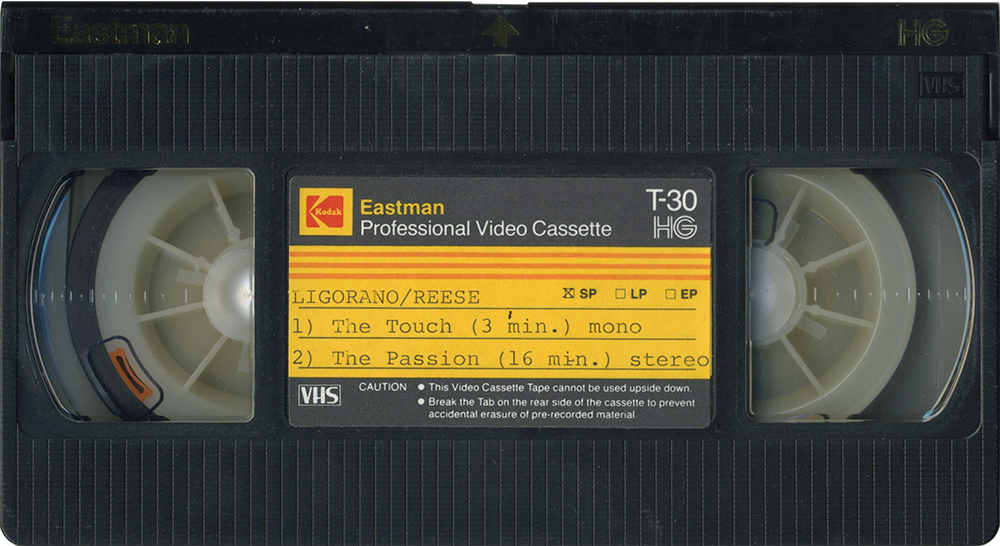 VHS, the most common tape format, was originally developed for consumer use and is still (rarely) used today. Competed against Betamax in the commercial space and ultimately won. The VSW Video Collection holds VHS tapes from four different decades.
VHS, the most common tape format, was originally developed for consumer use and is still (rarely) used today. Competed against Betamax in the commercial space and ultimately won. The VSW Video Collection holds VHS tapes from four different decades.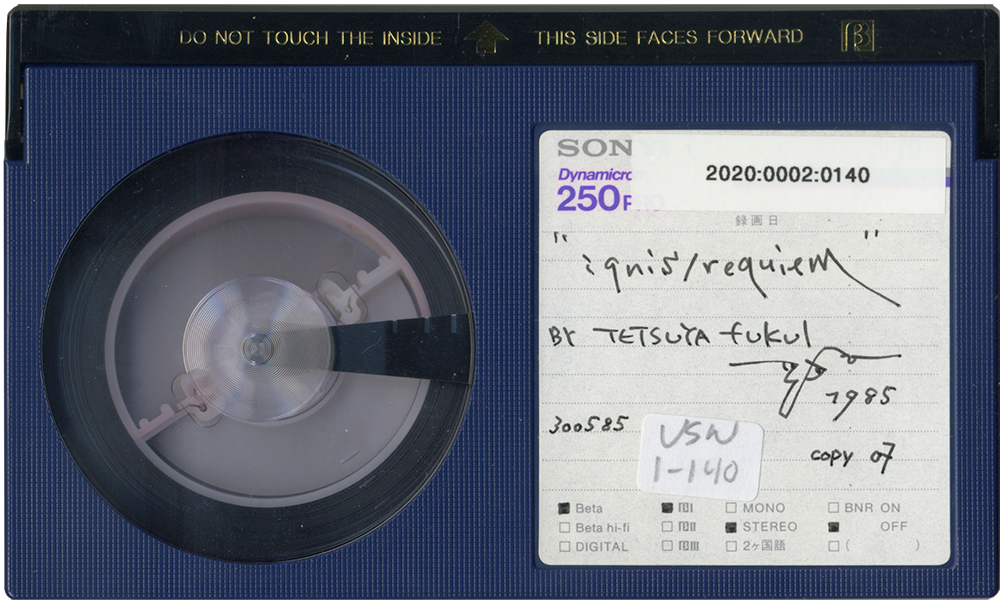 Betamax tapes were originally designed for use in schools and for consumer markets. These tapes were commonly used by artists throughout the 1980s.
Betamax tapes were originally designed for use in schools and for consumer markets. These tapes were commonly used by artists throughout the 1980s.